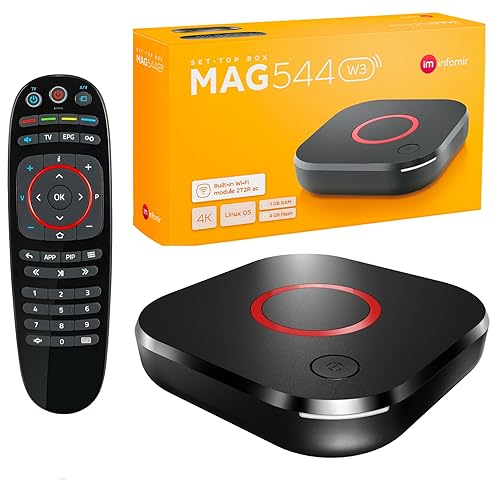Understanding Linux Receivers: What They Are and How They Work
What is a Linux Receiver?
Linux receivers are devices that allow users to receive and decode signals for satellite television, radio, or other broadcasts using the Linux operating system. They function similarly to standard televisions or set-top boxes, but they offer enhanced features and flexibility due to the open-source nature of Linux. Think of a Linux receiver as a gateway to a world of customisation and control over your viewing experience, enabling you to access a wide variety of channels and content.
How Do They Work?
The operation of a Linux receiver hinges on both hardware and software components. The device captures incoming signals via an antenna or satellite dish and processes these signals through its internal hardware. The Linux operating system provides the software backbone, allowing for advanced features like channel management, recording capabilities, and the installation of additional plugins for extended functionality. This means you’re not limited to standard broadcasting options; you can tailor your setup to fit your specific needs.
Key Features to Look For in a Linux Receiver
Compatibility with Various Standards
When choosing a Linux receiver, it’s essential to ensure it supports various broadcasting standards such as DVB-S2 for satellite reception or DVB-T/T2 for terrestrial television. This compatibility allows you to access a broader range of channels and services, ensuring flexibility as your viewing preferences change.
Processing Power and Memory
The processing power of a receiver plays a crucial role in its performance. A device with a faster processor will handle tasks like decoding high-definition channels more smoothly, while sufficient RAM ensures that the operating system runs without lag. Look for a receiver with a dual-core processor and at least 1GB of RAM for a seamless experience.
User Interface and Ease of Use
A user-friendly interface makes a significant difference in how easily you can navigate channels and settings. Opt for a Linux receiver that offers a clear, intuitive menu system, making it simple to customise your viewing options and access various features.
Expandability and Customisation
One of the key advantages of Linux receivers is their ability to be customised. Check for models that allow you to install additional software or plugins, enhancing functionality like streaming services, media playback, and more. This flexibility ensures that your device can evolve with your viewing habits.
Top Linux Receiver Models for Different Budgets
Budget Options
For those on a budget, models such as the VU+ Uno 4K SE or the Edision OS Mini provide excellent functionality without breaking the bank. They support various broadcasting standards and offer sufficient processing power for most streaming needs, making them ideal picks.
Mid-Range Choices
Mid-range models like the Zgemma H9S strike a good balance between features and price. With robust performance and better expandability options, these devices cater well to viewers looking for a step up from basic models without opting for premium prices.
Premium Options
If you’re looking for the best experience possible, consider investing in a high-end Linux receiver such as the Dreambox DM920 or the VU+ Ultimo 4K. These devices feature superior processing power, stunning video quality, and extensive customisation options, suitable for users who want the most from their setup.
Setting Up Your Linux Receiver: A Simple Guide
Initial Setup Process
Setting up your Linux receiver is typically straightforward. Start by connecting your receiver to your TV via HDMI and setting up the dish or antenna according to the user manual. Once connected, power on the unit, and it will guide you through the initial setup process, including selecting your language and scanning for channels.
Configuring Channels and Settings
After the initial setup, spend some time configuring your channel list. This includes sorting channels, setting up favourites, and adjusting any pertinent settings for picture and audio. Utilizing the receiver’s menu system, you can personalise your viewing experience to suit your preferences.
Installing Plugins and Software
To unlock additional features, explore the options for installing plugins or supplementary software. Most Linux receivers have a built-in package management system that simplifies this process. Follow the prompts to add new functionalities, such as streaming services or enhanced media players, contributing to a more robust device.
Enhancing Your Experience: Accessories and Additional Software
Essential Accessories
To get the most out of your Linux receiver, consider adding accessories such as a wireless dongle for internet connectivity or an external hard drive for recording shows. A good quality HDMI cable can improve video signals, while a universal remote can streamline your control over multiple devices.
Additional Software Options
Besides plugins for streaming and playback, explore options for media centre software that integrate well with Linux receivers. Software like Kodi can provide a comprehensive media experience, allowing you to organise and view your multimedia library in a single interface.




















